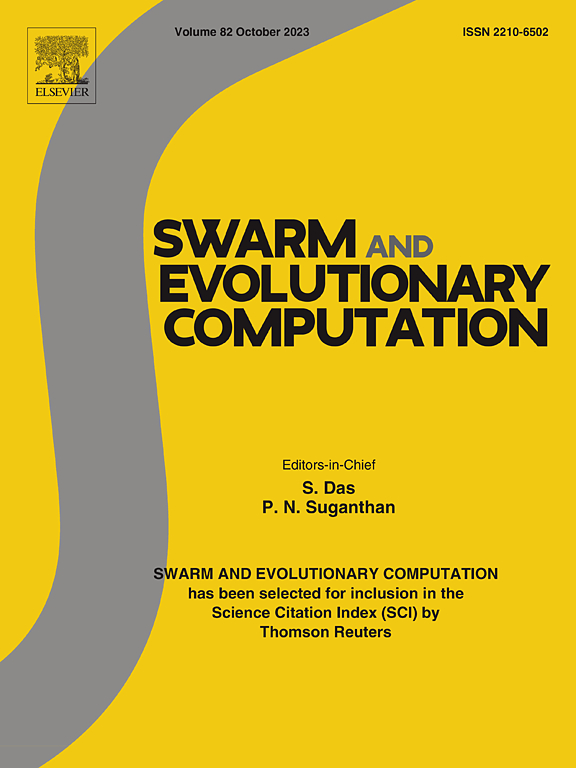当机器人向自然学习:GLWOA-RRT*,一种受自然启发的运动规划方法
IF 8.2
1区 计算机科学
Q1 COMPUTER SCIENCE, ARTIFICIAL INTELLIGENCE
引用次数: 0
摘要
自主移动机器人的最佳运动规划仍然是一个悬而未决的问题,经典的方法往往难以解决现实世界强加给系统的条件。近年来,人们对通过模仿自然过程来解决不同技术问题的自然启发方法产生了浓厚的兴趣。在此背景下,本文关注基于自然启发方法的运动规划器的开发,该方法被称为GLWOA-RRT*。它基于快速探索随机树星(RRT*),为智能体的良好初始化提供了有效的搜索空间探索,而鲸鱼优化算法(WOA)是最有效的基于自然的方法之一,由于其快速收敛,计算精度高,有效地平衡了探索和利用以避免陷入局部最优,并在解决不同领域的现实挑战中表现出显着的性能。从概念上讲,GLWOA-RRT*是一种全局方法,通过对群体中的每个agent进行机器人运动编码来解决运动规划问题。通过确定机器人要执行的最优安全运动来解决问题。GLWOA-RRT*已首先应用于静态和动态环境的仿真,其中在运动规划环境中对WOA参数进行了详细的实验分析。此外,它已经在一系列具有挑战性的场景中进行了测试,结果证明了该算法在合理时间内找到有效和最佳运动的效率。所获得的结果还显示了GLWOA-RRT*通过提供更好的结果来改进RRT*的性能,特别是在具有挑战性的场景中。最后,GLWOA-RRT*已经在基于3D gazebo的模拟环境和物理环境中使用机器人操作系统(ROS)在现实场景中实现和验证。结果证明了该方法在现实环境中的有效性和适用性。本文章由计算机程序翻译,如有差异,请以英文原文为准。
When robots learn from nature: GLWOA-RRT*, a nature-inspired motion planning approach
Optimal motion planning for autonomous mobile robots remains still an open issue, with the classical approaches often struggle to address real-world conditions imposed on the system. In recent years, there has been a surge of interest in nature-inspired approaches in solving different technological problems by imitating natural processes. In this context, the present paper concerns the development of a motion planner based on a nature-inspired approach, which is dubbed GLWOA-RRT*. It is based on the Rapidly Exploring Random Tree Star (RRT*), offering an efficient exploration of the search space for a good initialisation of agents, and the Whale Optimisation Algorithm (WOA), one of the most efficient nature-based approaches thanks to its fast convergence, high calculation accuracy, efficiency in balancing exploration and exploitation to avoid falling into a local optimum, and demonstrated remarkable performance in tackling real-world challenges in different fields. GLWOA-RRT* is conceptually built as a global approach, solving the motion planning problem by encoding each agent in the swarm by the robot’s motion. The problem is solved by determining the optimal and safe motion to be executed by the robot. GLWOA-RRT* has been applied first in simulation in both static and dynamic environments, where a detailed experimental analysis of WOA parameters in a motion planning context has been performed. Furthermore, it has been tested in a range of challenging scenarios, where the results demonstrate the efficiency of the algorithm in finding a valid and optimal motion in a reasonable time. The obtained results also exhibit the performance of GLWOA-RRT* in improving RRT* by offering better results, especially in challenging scenarios. Finally, GLWOA-RRT* has been implemented and validated in real-world scenarios using the Robot Operating System (ROS), both in 3D Gazebo-based simulation environments and in physical environments. The outcomes demonstrate its efficacy and applicability in real-world settings.
求助全文
通过发布文献求助,成功后即可免费获取论文全文。
去求助
来源期刊

Swarm and Evolutionary Computation
COMPUTER SCIENCE, ARTIFICIAL INTELLIGENCEC-COMPUTER SCIENCE, THEORY & METHODS
CiteScore
16.00
自引率
12.00%
发文量
169
期刊介绍:
Swarm and Evolutionary Computation is a pioneering peer-reviewed journal focused on the latest research and advancements in nature-inspired intelligent computation using swarm and evolutionary algorithms. It covers theoretical, experimental, and practical aspects of these paradigms and their hybrids, promoting interdisciplinary research. The journal prioritizes the publication of high-quality, original articles that push the boundaries of evolutionary computation and swarm intelligence. Additionally, it welcomes survey papers on current topics and novel applications. Topics of interest include but are not limited to: Genetic Algorithms, and Genetic Programming, Evolution Strategies, and Evolutionary Programming, Differential Evolution, Artificial Immune Systems, Particle Swarms, Ant Colony, Bacterial Foraging, Artificial Bees, Fireflies Algorithm, Harmony Search, Artificial Life, Digital Organisms, Estimation of Distribution Algorithms, Stochastic Diffusion Search, Quantum Computing, Nano Computing, Membrane Computing, Human-centric Computing, Hybridization of Algorithms, Memetic Computing, Autonomic Computing, Self-organizing systems, Combinatorial, Discrete, Binary, Constrained, Multi-objective, Multi-modal, Dynamic, and Large-scale Optimization.
 求助内容:
求助内容: 应助结果提醒方式:
应助结果提醒方式:


